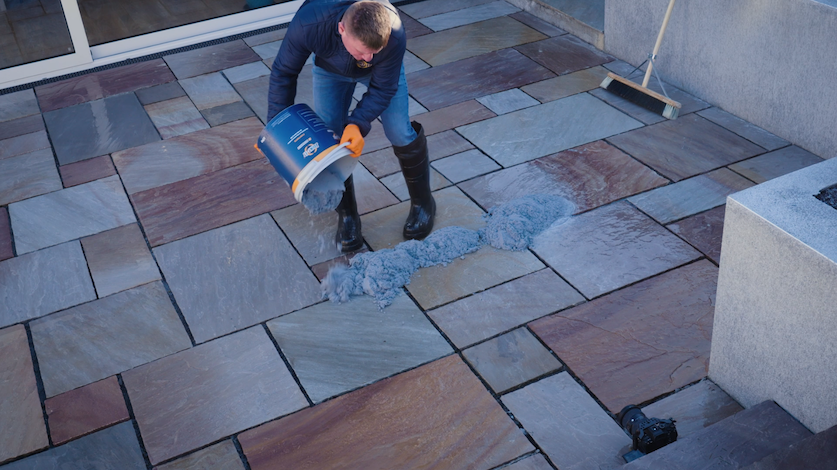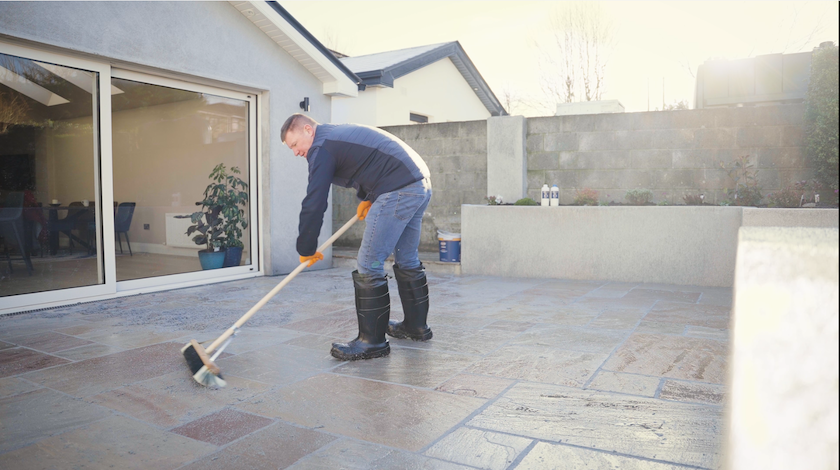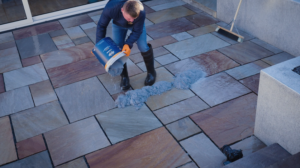As the chill factor sets in across much of the country, we delve into the essential cold weather tips for grouting pavements and patios during wintertime. Find out the recommendations for storing and handling jointing compounds to maintain their quality, plus the warning signs for when it is way too cold to grout.
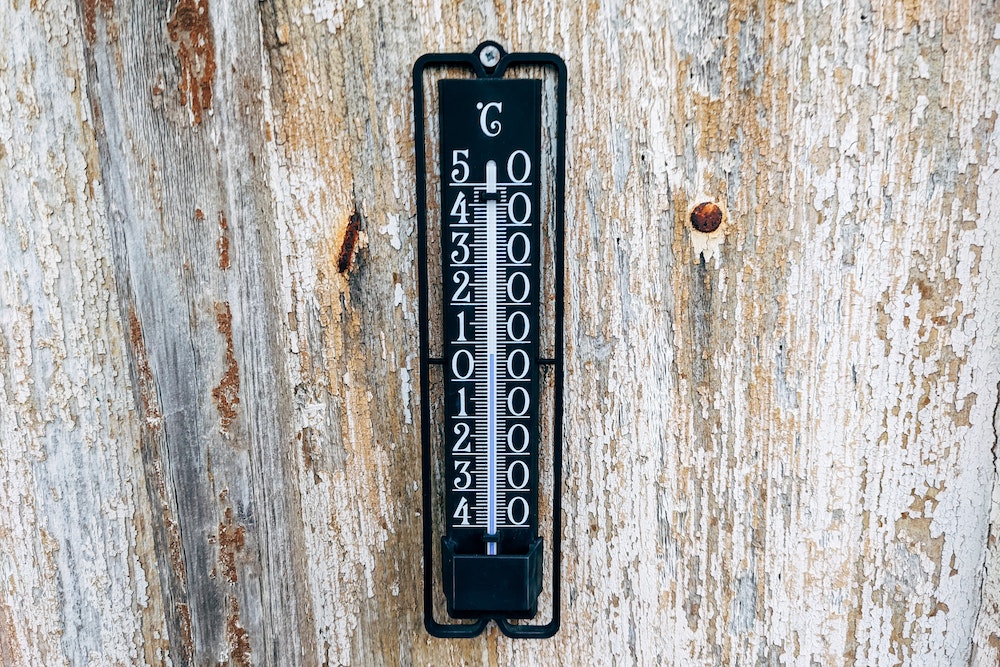
How cold weather affects landscaping
Like many Brits, most landscapers would affirm that a bit of cold weather never hurt anyone.
But when it comes to paving, the winter months can conjure up more than dark and chilly mornings in the minds of early-rising contractors.
If you are in the landscaping business – or accustomed to sprucing up outdoors areas at home – you’ll be well aware that seemingly incessant downpours and icy conditions can sometimes stop all operations dead in their tracks.
Timing is everything. And you may start to feel you could get a freelance gig at the Met Office with all the weather checks you do. But the regular checks are worth it if you manage to get the job finished before that cold weather front kicks in.
For those concerned about tiresome weather-related disruptions, read on to find out the reliable, high-spec products that will keep your operations running as smoothly as possible during winter.
We also speak to one of our resident paving experts, David Gay from the team at Ultrascape, to discover the absolute lowest temperature for using some of the industry’s best-regarded grouting materials.
Basics for paving during cold weather
Simply put, a cold snap can bring with it an extra consideration for your landscaping operations. And we’re not just talking gloves and thermals!
There are many grouting materials that you cannot use while the temperature is in the low single digits above freezing.
Ground temperature is absolutely crucial too.
David explains, “There are minimum temperatures for grouting for a reason.
“You should never grout when the ground is frozen. When that frozen ground thaws, water is naturally released. This extra water compromises the quality of your paving job and increases the risk of efflorescence occurring further down the track.”
He adds, “Besides, if the ground is frozen, it is simply too cold for most materials to set.”
Minimum temperatures for grouting
When it comes to grouting pavers, the majority of grouting mortars require the temperature to be no less than 5°C.
However, some landscapers report being able to use certain mortars and grouts when the temperature is 2°C and rising. Read on find out which jointing compounds and bedding mortars these reports refer to.
A top tip for those wanting to continue operations during winter: just move your work to later in the day.
David shares, “Rather than getting started first-thing, get going at a time when the ground will be frost-free and the temperature is rising.”
Allow for extended curing times
When the weather is cool, most materials will take slightly longer to cure after application.
For rapid-setting grout such as Flowpoint slurry grout (which normally sets between 15 and 30 minutes), this may mean just waiting a few more minutes until the material has fully cured and is ready for traffic.
“During colder temps it’s even more important to hold your nerve and not wash off too soon,” says David. “The material will certainly take longer to set.”
Some contractors do a thumb test to check whether a cement-based grout has properly cured. Lightly touch the jointing compound with the pad of your thumb and check whether an imprint is left behind. No thumbprint and the grout has properly set.
But David advises a different approach, especially for domestic applications of Flowpoint. “An easier way to understand when to wait to wash off Flowpoint would be if the product is still bleeding from the joint.
“As in any weather, don’t forget to keep the top of the pavers agitated so the product does not set on the slab surfaces.”
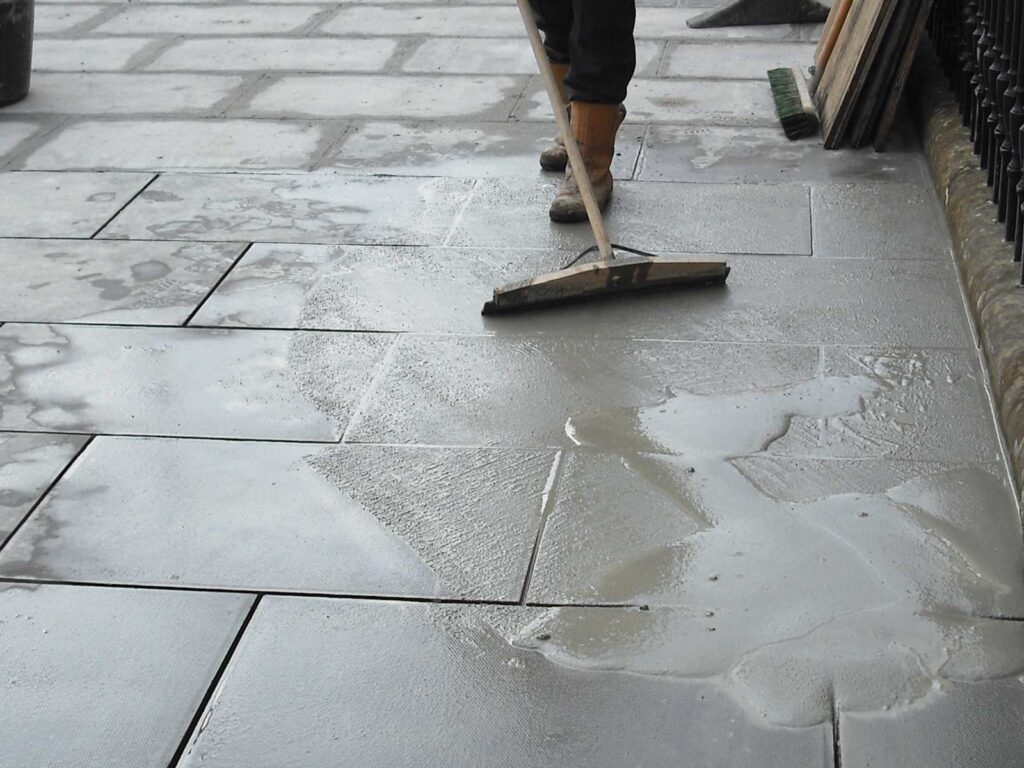
Using cement-based grouts during winter
Unlike many other cementitious jointing compounds, there are many reports of Flowpoint rapid-setting grout being successfully applied at the slightly cooler temperature of 2°C and rising. But the official word from the manufacturer is 5°C and rising.
Loved by landscapers, this external paving grout offers a construction life of up to 40 years.
If you want to try applying Flowpoint when the temperature is 2°C and rising, we recommend always doing a patch test first. Only mix one bag and apply it to a small area. Make sure you’re comfortable with how it’s setting before applying elsewhere. And, as mentioned earlier, always ensure the ground is not frozen before application.
Otherwise, we recommend waiting for later in the day – or another day – when the weather has improved.
David offers extra advice for when applying Flowpoint during single digits on the thermometer. “You’ll need to use a hose while applying Flowpoint – and during cold weather, you must make sure the water is free of frost.
“Before you start, ensure the hose itself is not frozen. Run it for a few moments to check.
“Another good idea is to mix the Flowpoint dry mixture with the water for longer. An extended mixing time is likely to inject a little more heat into the formula.”
As with all cement-based mortars, also ensure the Flowpoint dry-mix was protected against frost during storage. See below for our storage tips.
Alternative option for bedding mortar
Most cementitious products on the market must be applied at a minimum temperature of 5°C.
However, some contractors have found from direct experience that ECO-Bed bedding mortar can be applied at temperatures of 2°C and rising because of the accelerators and additives that are contained within the formula.
As mentioned earlier, it is crucial to make sure the ground is completely frost-free before laying the bedding mortar or doing any other grouting activities.
Laying permeable paving during winter
Much like cement-based grouts, permeable paving formulas can also be used during colder weather when the ground is not frozen.
For example, the permeable bedding mortar, Perma-Bed, can be laid during temperatures of 2°C and rising.
Also, the sand-based, permeable grout PremJoint can be used at 3°C and rising.
“As with all of these materials, the ground temperature is key,” explains David.
“With PremJoint, be aware of the water temperature when using the product. You must avoid any possible quick-freeze of the water before the formula has had time to set.”
Cold weather tips for storing materials
Consider where your materials are currently stored. Are they protected from wind, rain, damp and frost? If not, mixtures could potentially be compromised, which can lower the quality of your overall landscaping work.
“Good storage facilities that are free from dampness are especially important with cement-based materials,” explains David. “Obviously any dampness that enters the bags will cause the products to set.”
Be sure to store materials off the ground so they are less likely to be affected by both cold, damp floors and frost. A pallet or raised shelving unit will do – particularly for bags of bedding mortars and jointing compounds, plus any water-based ancillary items.
If the roof is leaking water, cover the paving materials with a waterproof sheet to keep your products dry.
Most paving materials require storage at a minimum of 5°C. Check the manufacturer’s instructions if you’re unsure.
Test the temperature of your storage room and install a heater if needed. Choose a heater with a thermometer that automatically turns on once the temperature drops dangerously close the lowest recommended storage temp.
Can it be too cold to grout?
In summary, yes – it can be too cold to grout.
Never grout if the ground is frozen. You must always check that the ground is frost-free before beginning any type of paving work and that the air temperature is set to rise rather than fall.
Most jointing compounds can be used during temperatures of 5°C. However some report using cement-based Flowpoint wet slurry grout at temperatures of 2°C and rising, and Premjoint permeable grout from 3°C and rising.
Another massive benefit of using a rapid-setting grout like Flowpoint is that it will set pretty quickly. That way, sudden changes in weather shouldn’t phase you too much as it’s likely the formula will have before it takes hold. However, do be aware of the slightly longer curing time during colder temps.
Can you grout in the rain?
Whether you can grout in the rain really depends on which mortar you are paving with.
Mortars that are applied as a wet slurry, such as Flowpoint, can be applied during a light shower. In fact, a cool, damp day will actually help the application process.
But remember, too much rain can jeopardise the consistency of the product. We cover all the watery details in our article on applying Flowpoint in the rain if you’d like to find out more.
Cold weather tips for grouting outdoors
If you’re paving during cold weather, follow these tips for a professionally paved finish:
- Store your materials in a frost-free, damp-free area of 5°C minimum
- Above all else, check the ground is not frozen
- Check the outdoor temperature is 5°C and rising (2°C for some reported mortars)
- Plan paving for later in the day when it is likely to be warmer
- Check hose pipes and sponge machines are free from frost
- Mix water-based formulas for longer to add more heat
- Never pave during heavy rain – a light drizzle is fine for some jointing compounds
- Allow for a longer curing time during colder weather
Does cold weather affect mortar?
With high-spec grouting products, any developing cracks in the dry mortar are likely to be caused by movement in the bedding mortar itself.
David advises, “Always ensure paving slabs are positioned on a full-contact bed to prevent movement and water ingress, and that a good-quality primer is applied to each of the pavers.”
Ultrascape’s Mortar Paving System has been stringently tested to provide contractors with a set of construction materials they can trust.
The system, which fully complies with the British Standard (BS) 7533, involves applying Eco-Bed for the fine bedding concrete, priming slabs with Pro-Prime and using Flowpoint paving grout for the joints.
“This system is commonly known as the ‘Instarmac System’. Easy to mix and fast to apply, it can offer extra peace of mind to contractors and customers alike as it can last up to 40 years without needing to regrout.”
Grouting indoors during winter
For those seemingly lucky ones who are grouting indoors, the minimum air temperature for most cement-based tile adhesives and levelling compounds is still 5°C or above.
Common practice is to use a portable electric heater if the temperature is dropping dangerously close to 5°C. Not just there to ease your chilblains, a heater will help raise and maintain substrate temperatures while you work – use it until the materials have fully cured.
When using a heater, always direct the heat into the air. Never point heaters directly at freshly laid materials. Aggressive drying in certain areas can create the phenomenon called crazing, producing a network of fine cracks on the grout surface.
Avoid using a gas heater. Instead, electric heaters will enable the cement-based materials to dry in a uniform way across the whole area of the room.
When applying and curing cementitious grout, we also don’t advise using dehumidifiers to aid the setting process. Extra force for drying can cause undue stress.
Upskill and gain CPD points
Instarmac has set-up a Training Academy for each of its brands, including Ultrascape, Ultracrete and UltraTile.
Offering a huge library of resources, the site includes ‘how to’ videos and pdf guides on getting the most from their high-spec products, plus regular live webinars you can join for continued professional development (CPD) points.
Visit the Ultrascape Training Academy for more info about using Flowpoint, PremJoint and other popular jointing materials.
Call us for tailored advice
Whatever the weather and whatever the scale of your project, our team of experts is here to guide you through the best materials, ancillary products and heavy-duty tools for a quality paved finish.
If you have a specific query, don’t hesitate to get in touch with our family-run team on 0330 122 1025 (Mon–Fri, 8.30am–5.30pm). Delivery is available throughout mainland UK. We boast some of the best prices online, with great deals available when buying in bulk (pallet and part-pallet deals).





